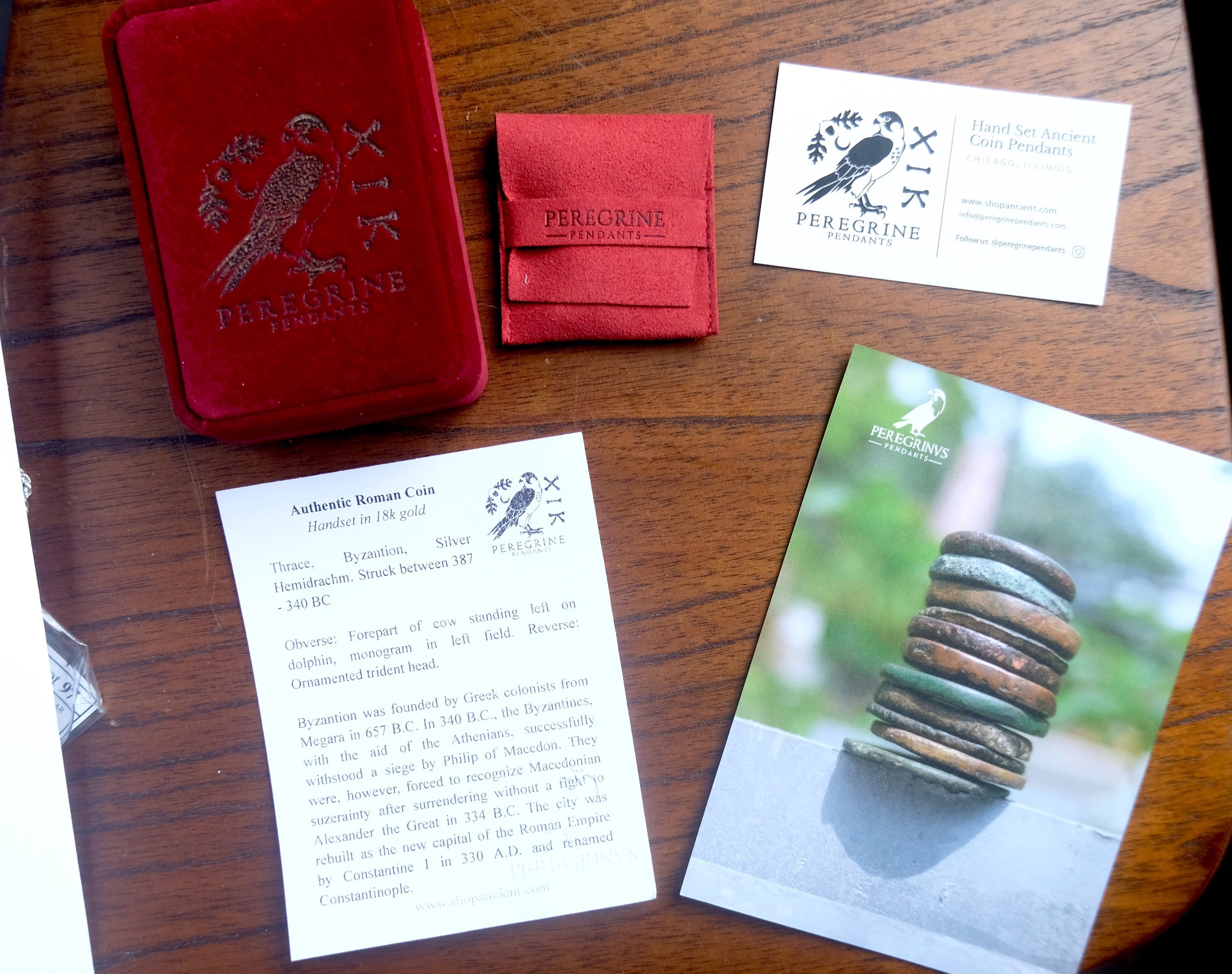 Image 1 of 4
Image 1 of 4

 Image 2 of 4
Image 2 of 4

 Image 3 of 4
Image 3 of 4

 Image 4 of 4
Image 4 of 4





Bracelet – Septimius Severus
Obverse: SEVERVS AVG PART MAX, laureate head right
Reverse - RESTITVTOR VRBIS, Septimius standing left, wearing wreath, holding patera in right hand over tripod altar, & spear in left
Mint: 200-201 AD
The coin is handset in sterling silver and attached to a vintage silver bracelet!
Note: I do have a matching necklace of Julia Domna (Severus' wife
Obverse: SEVERVS AVG PART MAX, laureate head right
Reverse - RESTITVTOR VRBIS, Septimius standing left, wearing wreath, holding patera in right hand over tripod altar, & spear in left
Mint: 200-201 AD
The coin is handset in sterling silver and attached to a vintage silver bracelet!
Note: I do have a matching necklace of Julia Domna (Severus' wife
Obverse: SEVERVS AVG PART MAX, laureate head right
Reverse - RESTITVTOR VRBIS, Septimius standing left, wearing wreath, holding patera in right hand over tripod altar, & spear in left
Mint: 200-201 AD
The coin is handset in sterling silver and attached to a vintage silver bracelet!
Note: I do have a matching necklace of Julia Domna (Severus' wife
Septimius Severus
Lucius Septimius Severus (Latin: [sɛˈweːrʊs]; 9 April 145 – 4 February 211) was a Roman emperor from 193 to 211. He was born in Leptis Magna (present day Al-Khums, Libya) in the Roman province of Africa. As a young man he advanced through the customary succession of offices under the reigns of Marcus Aurelius and Commodus. Severus seized power after the death of the emperor Pertinax in 193 during the Year of the Five Emperors.
After deposing and killing the incumbent emperor Didius Julianus, Severus fought his rival claimants, the Roman generals Pescennius Niger and Clodius Albinus. Niger was defeated in 194 at the Battle of Issus in Cilicia. Later that year Severus waged a short punitive campaign beyond the eastern frontier, annexing the Kingdom of Osroene as a new province. Severus defeated Albinus three years later at the Battle of Lugdunum in Gaul.
After consolidating his rule over the western provinces, Severus waged another brief, more successful war in the east against the Parthian Empire, sacking their capital Ctesiphon in 197 and expanding the eastern frontier to the Tigris. He then enlarged and fortified the Limes Arabicus in Arabia Petraea. In 202, he campaigned in Africa and Mauretania against the Garamantes, capturing their capital Garama and expanding the Limes Tripolitanus along the southern desert frontier of the empire. He proclaimed as augusti (co-emperors) his elder son Caracalla in 198 and his younger son Geta in 209, both born of his second wife Julia Domna.
Severus travelled to Britain in 208, strengthening Hadrian's Wall and reoccupying the Antonine Wall. In AD 209 he invaded Caledonia (modern Scotland) with an army of 50,000 men[6] but his ambitions were cut short when he fell fatally ill of an infectious disease in late 210. He died in early 211 at Eboracum (today York, England), and was succeeded by his sons, who were advised by their mother and his powerful wife Julia Domna, thus founding the Severan dynasty. It was the last dynasty of the Roman Empire before the Crisis of the Third Century.


























